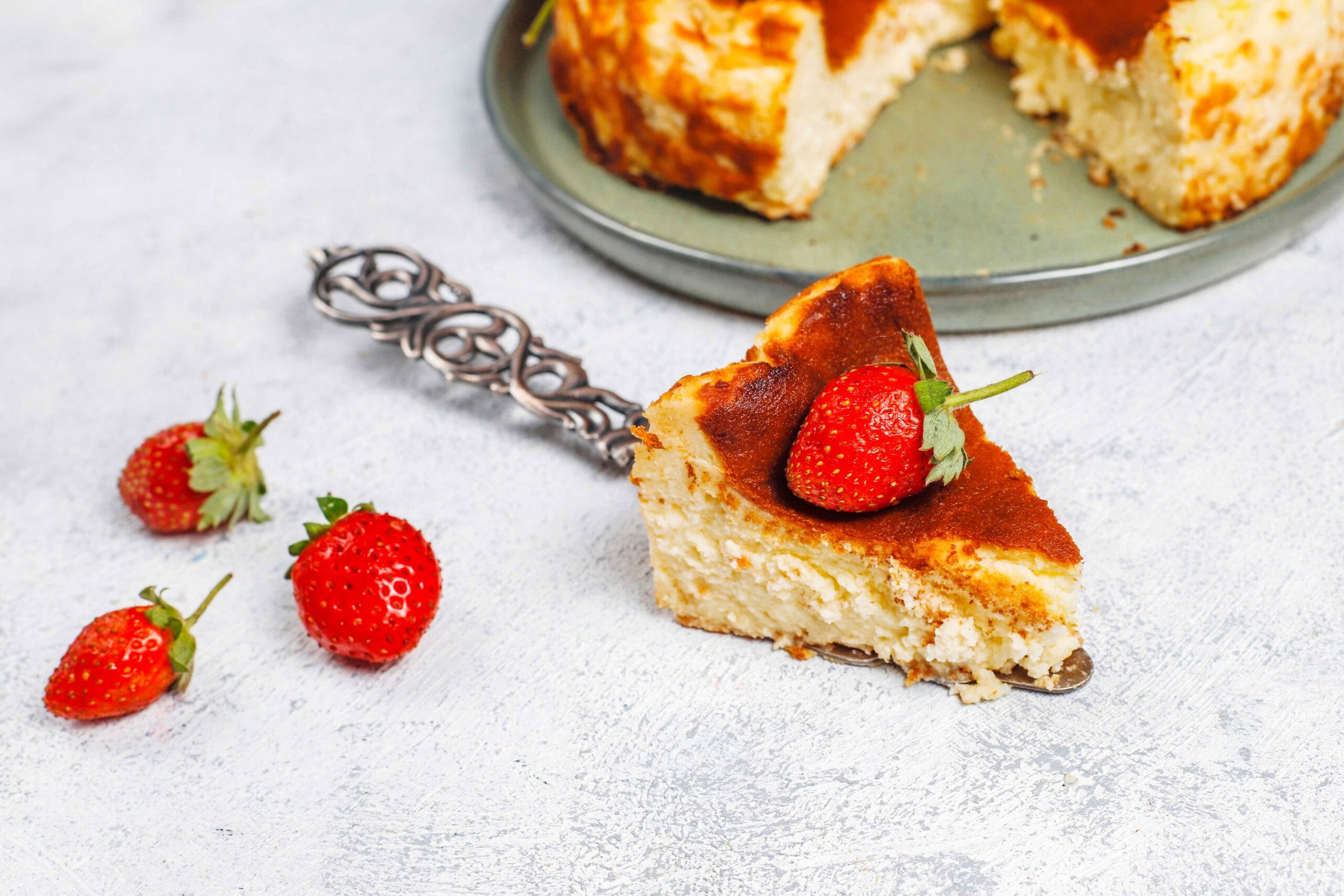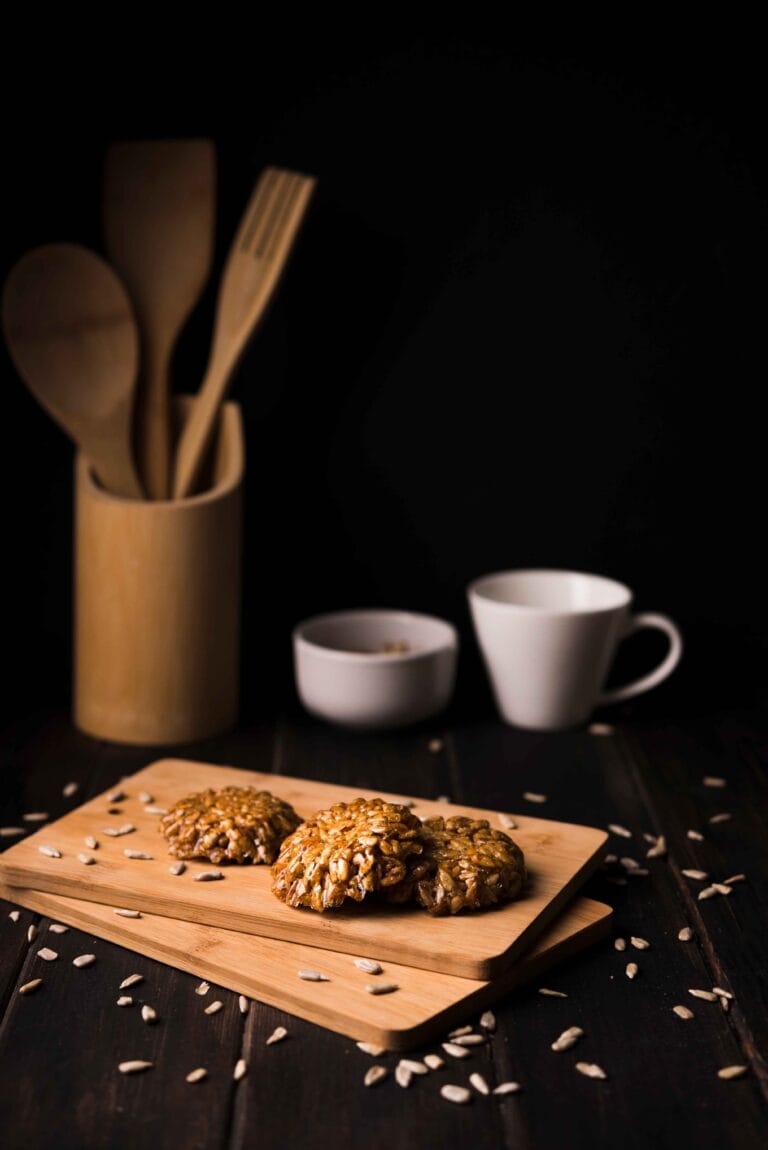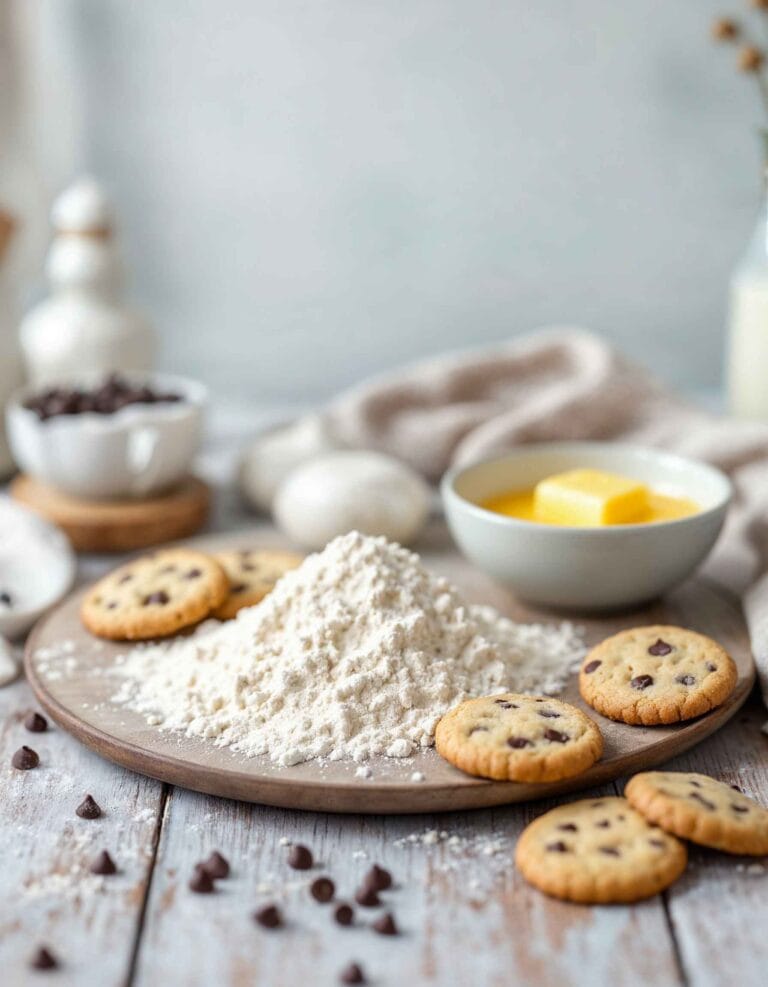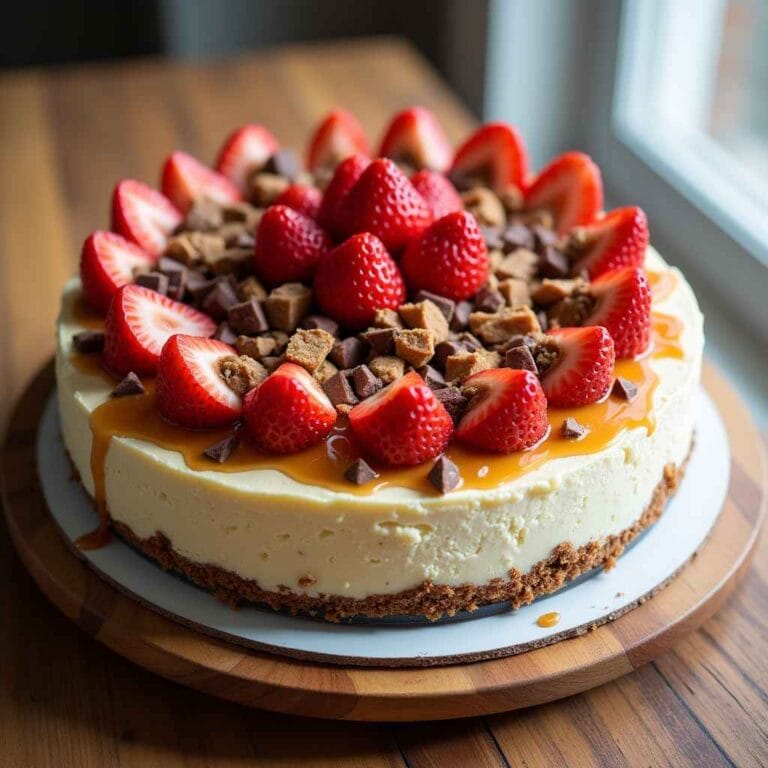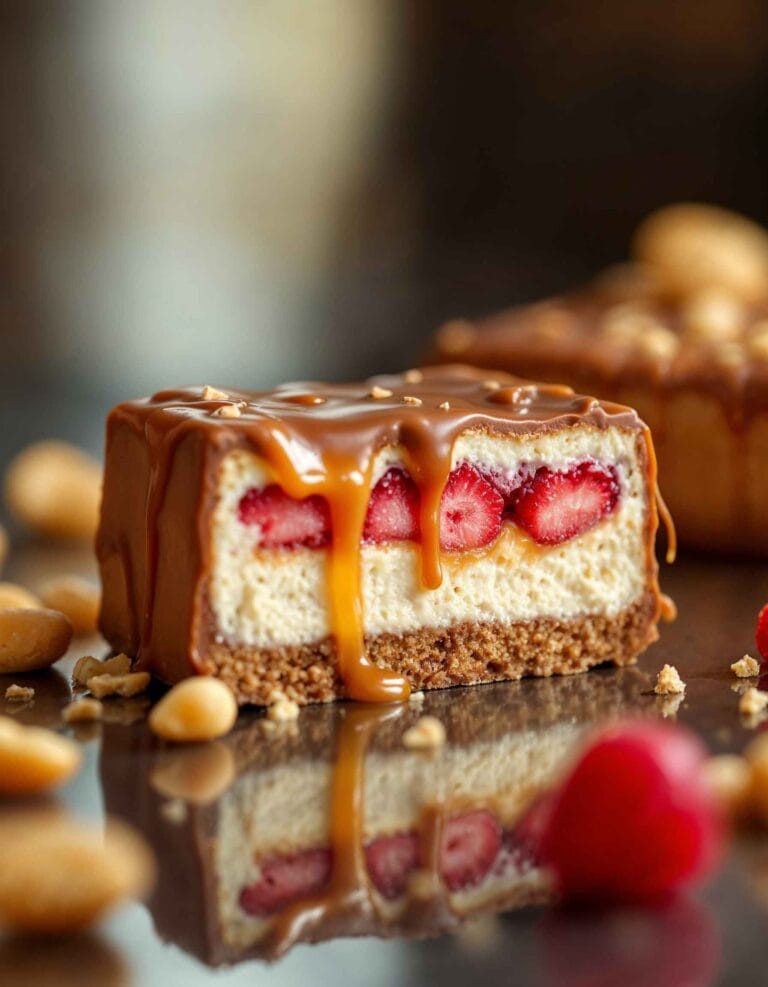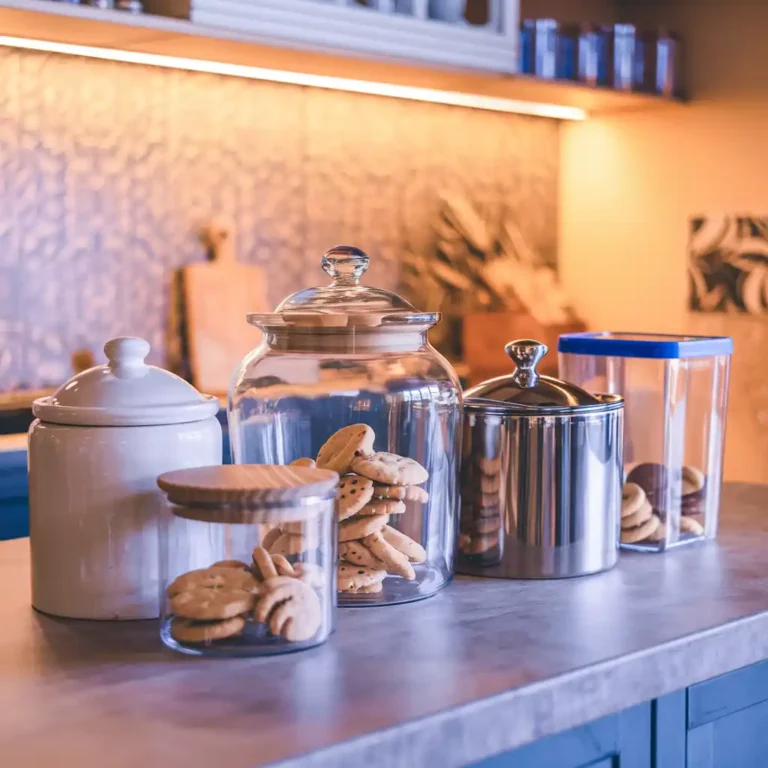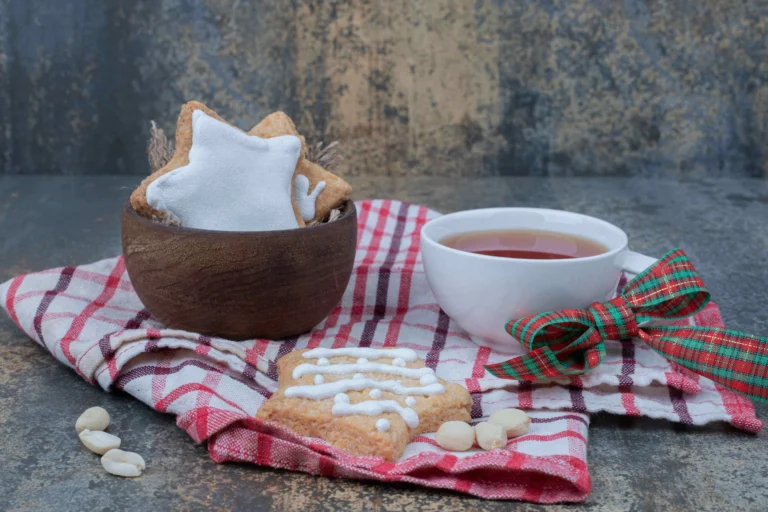What is Mexican Cheesecake Made Of?
Mexican cheesecake is a delightful dessert that has gained global popularity for its unique flavor profile and rich texture. While traditional cheesecakes are famous worldwide, the Mexican version stands out due to its fusion of classic ingredients with local Mexican flavors. Whether served as part of a festive meal or enjoyed as a sweet treat with coffee, Mexican cheesecake captures the essence of indulgence with a cultural twist.
This dessert features rich cream cheese, sugar, and eggs, combined with regional ingredients such as cinnamon, vanilla, and sometimes even cajeta (Mexican caramel). Some versions incorporate masa harina or sweetened condensed milk to give the cheesecake an unparalleled texture and taste. Often baked in a crust made from crushed cookies or Mexican biscuits, it achieves a harmonious balance of creamy and crumbly layers.
In this article, we will explore everything you need to know about Mexican cheesecake. From its key ingredients and preparation methods to its cultural significance and modern adaptations, you’ll uncover why this dessert is a must-try. Let’s dive into the heart of what makes Mexican cheesecake so irresistibly delicious!
Explore this ultimate churro cheesecake recipe for a delightful fusion of flavors.
What is Mexican Cheesecake?
Mexican cheesecake is a creamy and flavorful dessert that blends traditional cheesecake-making techniques with ingredients and flavors deeply rooted in Mexican culture. Known for its rich, velvety texture and subtle sweetness, this cheesecake stands out by incorporating elements that give it a distinctly Mexican touch.
Key Features of Mexican Cheesecake
- Rich Creaminess: The foundation of Mexican cheesecake is its luxurious creaminess, achieved through the use of cream cheese and often enhanced by sweetened condensed milk. This combination creates a silky texture that melts in the mouth.
- Mexican Flavors: Traditional Mexican flavors like vanilla, cinnamon, and sometimes even lime zest or cajeta (caramel made from goat’s milk) add depth and uniqueness.
- Customizable Crust: While many cheesecakes use graham crackers for the crust, Mexican cheesecake often features a base made from Maria cookies or galletas, adding a crumbly yet flavorful contrast.
- Balanced Sweetness: Unlike overly sugary desserts, Mexican cheesecake achieves a perfect balance, allowing its flavors to shine without being overwhelming.
Cultural Significance of Mexican Cheesecake
Mexican cheesecake is more than just a dessert; it often takes center stage during celebrations, holidays, and family gatherings. The combination of imported influences (such as European-style cheesecakes) and local ingredients represents Mexico’s rich culinary history. Whether served at Christmas dinners or enjoyed during the Día de los Muertos festivities, this dessert connects people through its comforting flavors.
Key Ingredients of Mexican Cheesecake
Primary Ingredients
- Cream Cheese: The heart of any cheesecake, cream cheese provides the rich and creamy base. High-quality cream cheese is essential for achieving the dessert’s signature texture.
- Sugar: Granulated sugar sweetens the cheesecake and complements the tanginess of the cream cheese.
- Eggs: Eggs act as a binding agent, giving the cheesecake structure and contributing to its silky smoothness.
Unique Mexican Additions
- Cinnamon: Known as canela in Spanish, cinnamon is a quintessential ingredient that adds warmth and a touch of spice.
- Vanilla: Mexican vanilla, renowned for its aromatic richness, elevates the flavor profile of the cheesecake.
- Sweetened Condensed Milk: Common in Mexican desserts, it enhances the cheesecake’s creaminess while adding a hint of caramelized sweetness.
- Maria Cookies or Galletas: Used for the crust, these cookies are slightly sweet and hold up well when combined with butter.
- Cajeta or Dulce de Leche: These caramel-like sauces may be drizzled on top for extra indulgence.
Optional Ingredients
- Masa Harina: A unique twist, masa harina can be used to incorporate a subtle corn flavor.
- Lime Zest: For a zesty brightness, lime zest is sometimes included in the mixture.
Mexican cheesecake’s simple yet versatile ingredient list allows bakers to experiment while staying true to its cultural roots.
Learn what makes churro cheesecake a unique and irresistible dessert.
Preparation Method
Making a Mexican cheesecake is a rewarding culinary experience that combines simple ingredients with careful techniques to create a dessert that is both delicious and visually appealing. Here’s a step-by-step guide to preparing a classic Mexican cheesecake.
Preparing the Crust
- Ingredients for the Crust:
- 2 cups of crushed Maria cookies or graham crackers.
- ½ cup of melted unsalted butter.
- 2 tablespoons of granulated sugar (optional).
- Process:
- Crush the cookies until they have a fine, sandy texture. A food processor works well for this, but a rolling pin and a zip-top bag can also do the trick.
- Mix the cookie crumbs with the melted butter and sugar until the mixture resembles wet sand.
- Press the mixture firmly into the bottom of a springform pan, creating an even layer.
- Preheat the oven to 350°F (175°C) and bake the crust for 10 minutes to set it. Allow it to cool while you prepare the filling.
Preparing the Filling
- Ingredients for the Filling:
- 3 (8-ounce) packages of cream cheese, softened.
- 1 cup of granulated sugar.
- 1 can (14 ounces) of sweetened condensed milk.
- 3 large eggs.
- 1 teaspoon of Mexican vanilla extract.
- 1 teaspoon of ground cinnamon (optional).
- Zest of 1 lime (optional).
- Process:
- In a large mixing bowl, beat the softened cream cheese until smooth and creamy. Use a hand mixer or stand mixer for the best results.
- Gradually add the sugar, beating until well incorporated.
- Add the sweetened condensed milk, mixing until smooth.
- Beat in the eggs one at a time, ensuring each is fully incorporated before adding the next.
- Stir in the vanilla extract, cinnamon, and lime zest for added flavor.
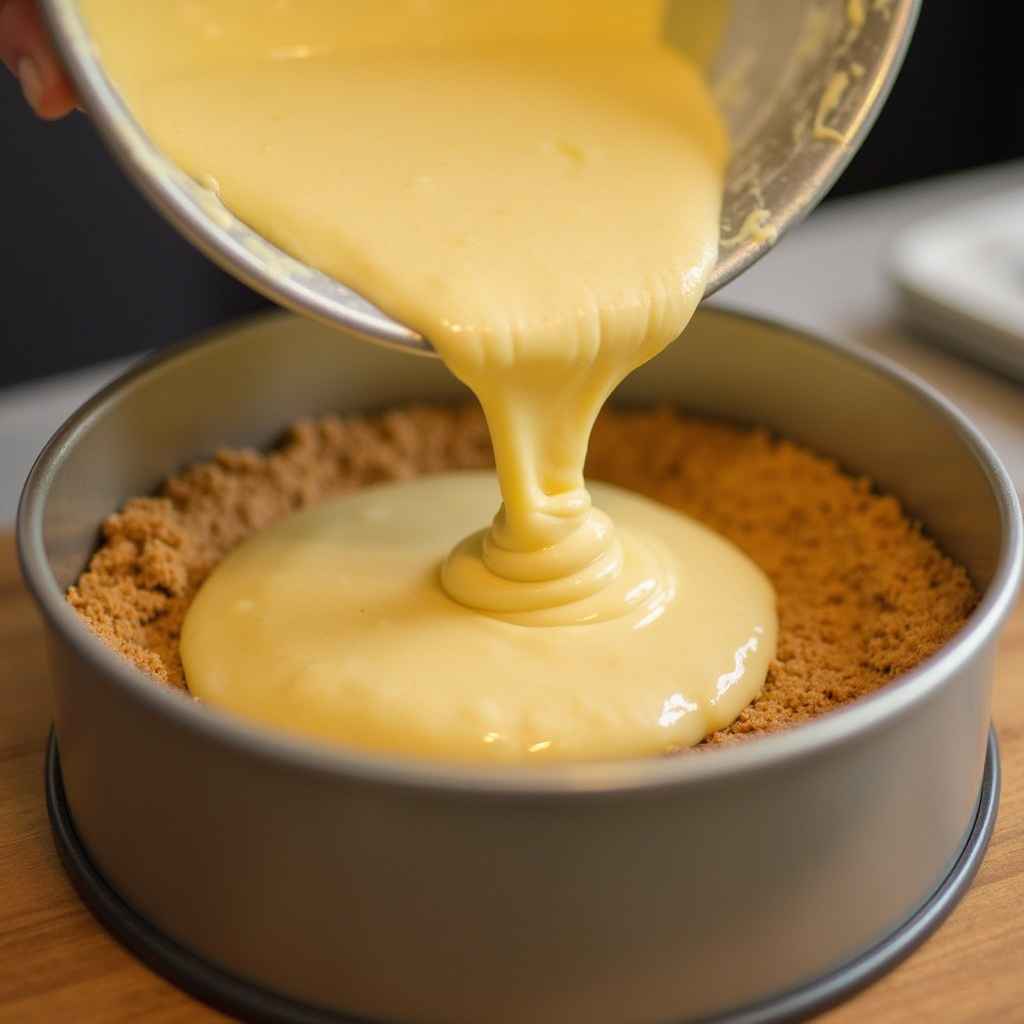
Baking the Cheesecake
- Pour the prepared filling into the cooled crust, spreading it evenly with a spatula.
- Place the springform pan on a baking sheet to catch any drips.
- Bake at 325°F (160°C) for 50-60 minutes until the edges set and the center jiggles slightly when you shake it.
- Turn off the oven and leave the cheesecake inside with the door slightly ajar for 1 hour. This helps prevent cracks on the surface.
Cooling and Chilling
- Remove the cheesecake from the oven and let it cool to room temperature.
- Cover the pan with plastic wrap or aluminum foil and refrigerate for at least 4 hours, preferably overnight. This allows the flavors to meld and the texture to firm up.
Adding Finishing Touches
- Once chilled, remove the cheesecake from the pan by running a knife along the edges before releasing the springform latch.
- Decorate the top with cajeta, dulce de leche, whipped cream, or fresh fruit for added flair.
Making Mexican cheesecake is as much about the process as it is about the enjoyment of the final result. The recipe allows for creativity while maintaining its traditional essence.
Variants of Mexican Cheesecake
Mexican cheesecake is a versatile dessert, and its adaptability has led to numerous regional and creative variations. These twists retain the essence of the traditional recipe while introducing new flavors and textures that reflect personal or cultural preferences.
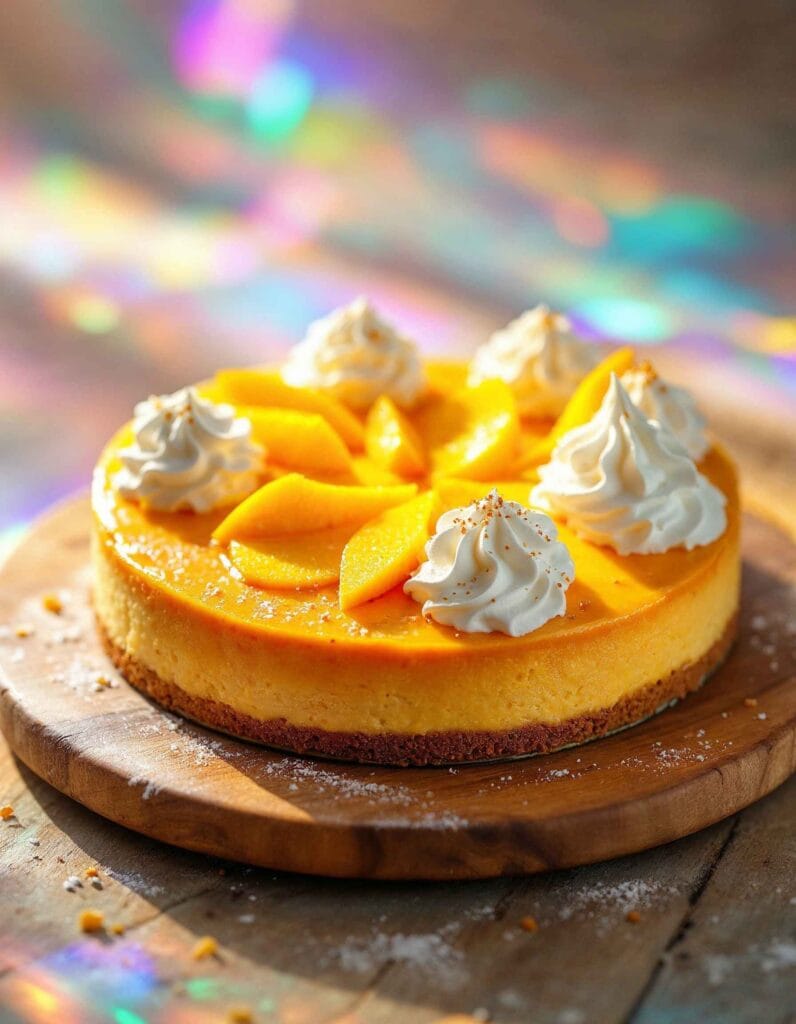
Regional Variations
- Traditional Mexican Cheesecake:
- The classic version uses cream cheese, sweetened condensed milk, and a Maria cookie crust. Bakers often flavor it with cinnamon and vanilla, giving it a warm and comforting taste.
- Cajeta Cheesecake:
- A popular regional variation includes a topping or swirl of cajeta (goat’s milk caramel), which adds a rich, nutty sweetness. This is especially common in central Mexico.
- Tres Leches Cheesecake:
- Inspired by the beloved tres leches cake, this version incorporates evaporated milk, condensed milk, and heavy cream into the recipe for an ultra-moist and decadent texture.
Modern Twists
- Churro Cheesecake:
- This playful version features a cinnamon-sugar crust reminiscent of churros. Sometimes, a layer of cinnamon sugar is sprinkled on top for a crunchy finish.
- Chocolate Mexican Cheesecake:
- By adding melted Mexican chocolate or cocoa powder to the filling, this variation offers a chocolatey twist with a hint of cinnamon and spices characteristic of Mexican chocolate.
- Tequila Lime Cheesecake:
- A modern favorite for celebrations, this version incorporates tequila and lime juice into the filling, creating a zesty, boozy dessert.
Fusion-Inspired Cheesecakes
- Mango Cheesecake:
- This tropical twist includes a mango puree topping or swirl, blending the creamy cheesecake base with the sweetness and acidity of fresh mangoes.
- Spiced Pumpkin Cheesecake:
- Popular during autumn and holidays like Día de los Muertos, this version combines pumpkin puree with spices like nutmeg and cloves for a seasonal flair.
No-Bake Mexican Cheesecake
For those who prefer a quicker preparation method, the no-bake Mexican cheesecake is a fantastic option:
- Ingredients: It uses cream cheese, sweetened condensed milk, whipped cream, and vanilla.
- Method: The filling is mixed and poured over a cookie crust, then chilled until firm. This version skips the baking process but retains the rich flavors.
Dietary Variations
- Gluten-Free Mexican Cheesecake:
- Made with gluten-free cookies or almond flour crusts, this version ensures those with dietary restrictions can enjoy the dessert.
- Vegan Mexican Cheesecake:
- Plant-based versions use cashews or tofu for the filling, coconut milk for creaminess, and dairy-free sweetened condensed milk alternatives.
With its endless possibilities for adaptation, Mexican cheesecake offers something for everyone, whether you’re a traditionalist or an experimental baker.
Why is Mexican Cheesecake Unique?
Mexican cheesecake stands apart from other cheesecake varieties due to its distinctive ingredients, preparation methods, and cultural influences. Its unique combination of traditional Mexican flavors with classic cheesecake techniques creates a dessert that feels both familiar and special.
Traditional vs. Mexican Cheesecake
- Flavor Profile:
- While traditional cheesecakes often focus on plain or fruit flavors, Mexican cheesecake frequently incorporates warm spices like cinnamon and bold flavors like cajeta and Mexican vanilla.
Discover the warm, cinnamon-sugar flavor that defines churros
- Crust Variations:
- The use of Maria cookies for the crust adds a hint of sweetness and a crumbly texture distinct from the graham cracker crust commonly used in other recipes.
- Sweetened Condensed Milk:
- This ingredient, a staple in many Mexican desserts, adds creaminess and a subtle caramelized flavor not typically found in other cheesecake recipes.
Texture and Presentation
- Velvety Smoothness:
- The addition of sweetened condensed milk and the careful blending of ingredients result in a silky-smooth texture that is a hallmark of Mexican cheesecake.
- Decorative Toppings:
- Traditional Mexican cheesecake often features toppings such as cajeta, fresh fruit, or whipped cream. These not only enhance the flavor but also add visual appeal.
- Layering Techniques:
- Some versions include layered fillings, such as cajeta swirls or chocolate, giving the cheesecake an artistic and indulgent presentation.
Cultural Influences
- A Blend of Traditions:
- Mexican cheesecake reflects the country’s history of combining European influences with native ingredients. The cream cheese and baking techniques are of European origin, while ingredients like cinnamon, vanilla, and cajeta are distinctly Mexican.
- Holiday and Festive Associations:
- It’s a staple dessert for holidays such as Christmas, Día de los Muertos, and family celebrations, symbolizing comfort and togetherness.
- Regional Adaptations:
- In different parts of Mexico, the recipe changes slightly to reflect local tastes, creating a rich tapestry of flavors.
Pairing Tradition with Innovation
Mexican cheesecake’s adaptability allows bakers to experiment with flavors while staying true to its roots. By incorporating modern ingredients like chocolate, tequila, or tropical fruits, it has become a global favorite while retaining its cultural authenticity.
In conclusion, the unique appeal of Mexican cheesecake lies in its ability to merge the rich, creamy qualities of a classic cheesecake with the vibrant and bold flavors of Mexico.
Serving Suggestions
People can serve Mexican cheesecake in various ways, depending on the occasion and personal preference.Whether you’re hosting a festive gathering or enjoying a quiet evening at home, the right presentation and accompaniments can elevate the experience.
Traditional Serving Styles
- Simple and Classic:
- Serve chilled with no additional toppings to let the natural flavors of cinnamon, vanilla, and cream cheese shine.
- Cajeta Drizzle:
- A generous drizzle of cajeta or dulce de leche over the top adds a rich caramel sweetness that complements the creamy texture.
- Powdered Cinnamon or Sugar:
- A light dusting of ground cinnamon or powdered sugar enhances the presentation while adding a subtle flavor boost.
Festive Decorations
- Fresh Fruit Toppings:
- Add vibrant colors and fresh flavors with toppings such as sliced strawberries, mangoes, or blueberries.
- Whipped Cream Swirls:
- Pipe decorative swirls of whipped cream around the edges or in the center for an elegant touch.
- Edible Flowers:
- Use edible flowers like marigolds for a sophisticated and festive presentation, especially during special occasions like Día de los Muertos.
Creative Pairings
- Hot Beverages:
- Mexican cheesecake pairs beautifully with coffee or hot chocolate, especially Mexican-style hot chocolate spiced with cinnamon.
- Cold Drinks:
- Serve with a chilled glass of horchata (a sweet rice milk drink) or agua fresca for a refreshing contrast.
- Cocktail Pairings:
- Tequila-based cocktails, such as margaritas, or even a smooth dessert wine can complement the flavors of the cheesecake.
Unique Serving Ideas
- Cheesecake Bars:
- Cut the cheesecake into small bars or squares for bite-sized servings, perfect for parties and gatherings.
- Layered Cheesecake Cups:
- Create individual servings by layering cheesecake filling, crushed cookies, and toppings in glasses or jars.
- Frozen Cheesecake Treats:
- Freeze slices or portions and serve as a chilled dessert on hot days.
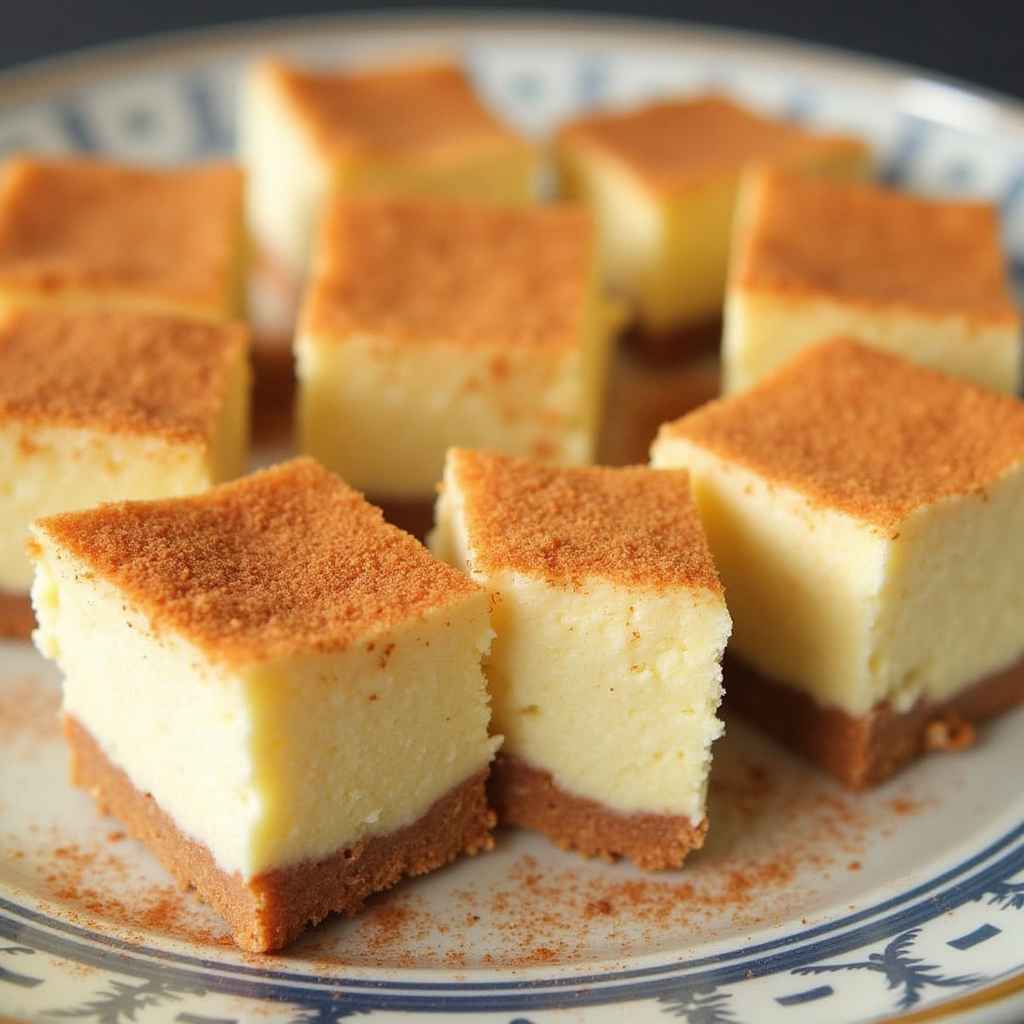
Seasonal Adaptations
- Holiday Flair:
- During Christmas, decorate the cheesecake with red and green toppings such as cranberries or pistachios.
- Autumn Twist:
- For fall celebrations, add spiced pumpkin puree or caramelized pecans as a topping.
Mexican cheesecake’s versatility in presentation and pairing ensures it can be tailored to any occasion.
FAQs
What is sopapilla cheesecake made of?
Sopapilla cheesecake is a popular Mexican-inspired dessert made from layers of crescent roll dough, a creamy cheesecake filling, and a cinnamon-sugar topping. The cheesecake filling typically consists of cream cheese, sugar, and vanilla extract. Once assembled, it is baked until golden and slightly puffed. The final dish is often drizzled with honey, which enhances the dessert’s warm and rich flavors. The crescent dough creates a flaky crust reminiscent of sopapillas, a traditional fried pastry, while the creamy filling and cinnamon-sugar topping add indulgent sweetness.
Compare traditional and French-style cheesecakes to discover what sets them apart.
Does Mexico have cheesecake?
Yes, Mexico has its own version of cheesecake, commonly referred to as pay de queso. Mexican cheesecake incorporates classic ingredients like cream cheese, sugar, and eggs, but often includes regional flavors such as vanilla, cinnamon, and sweetened condensed milk. The crust is typically made from Maria cookies or similar Mexican biscuits, giving it a distinct taste and texture. This dessert is a popular choice for holidays, family gatherings, and celebrations, reflecting the country’s ability to blend European-inspired recipes with traditional Mexican ingredients.
What is pay de queso made of?
Pay de queso, the Mexican version of cheesecake, is made with a base of cream cheese, sweetened condensed milk, eggs, and vanilla extract. It is often baked on a crust made from crushed Maria cookies mixed with melted butter, giving it a sweet and crumbly foundation. Some variations may include cinnamon or cajeta for added flavor. The result is a rich, creamy dessert with a delicate balance of sweetness and tanginess, embodying the best of Mexican culinary traditions.
What is traditional cheesecake made from?
Traditional cheesecake is made from a simple combination of cream cheese, sugar, and eggs, often with a touch of vanilla for added flavor. The crust is typically made from crushed graham crackers mixed with melted butter. Depending on the style (New York, Italian, or others), additional ingredients like sour cream or heavy cream may be included to adjust the texture and flavor. Traditional cheesecake is baked until the filling is set and has a smooth, creamy consistency, making it a classic dessert enjoyed worldwide.
Conclusion
Mexican cheesecake is a remarkable dessert that blends the creaminess of traditional cheesecake with the bold and warm flavors of Mexican cuisine. Its unique ingredients, such as Maria cookies, sweetened condensed milk, and regional additions like cajeta and cinnamon, set it apart from other cheesecakes. Whether you enjoy it in its classic form or one of the many creative variations, this dessert encapsulates the rich cultural and culinary heritage of Mexico.
From its versatile preparation methods to its role in festive celebrations, Mexican cheesecake has earned its place as a beloved treat. Its adaptability ensures there’s a version for every palate, whether you prefer a traditional recipe or modern twists like churro or tequila-lime cheesecake. Moreover, its pairing options with beverages and creative serving styles make it an excellent choice for any occasion.
Ultimately, Mexican cheesecake is more than just a dessert; it’s a culinary experience that brings people together, combining comfort, tradition, and innovation in every bite. It’s a testament to how a simple recipe can be elevated through cultural influences and personal creativity. So the next time you’re craving something indulgent and flavorful, give Mexican cheesecake a try—you won’t be disappointed!

